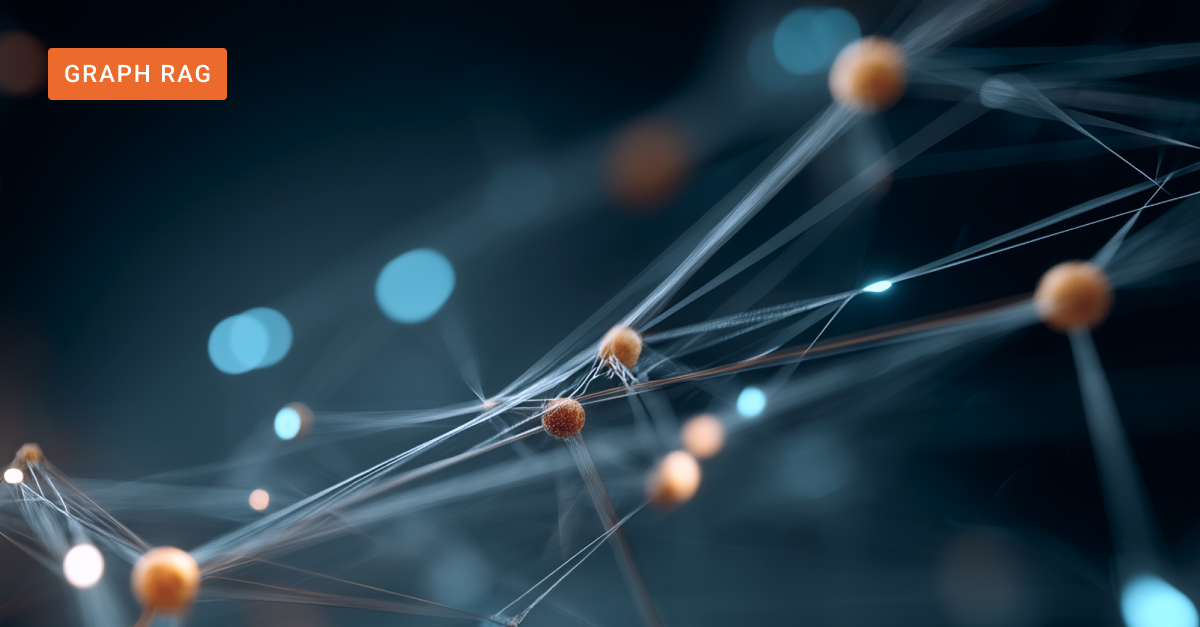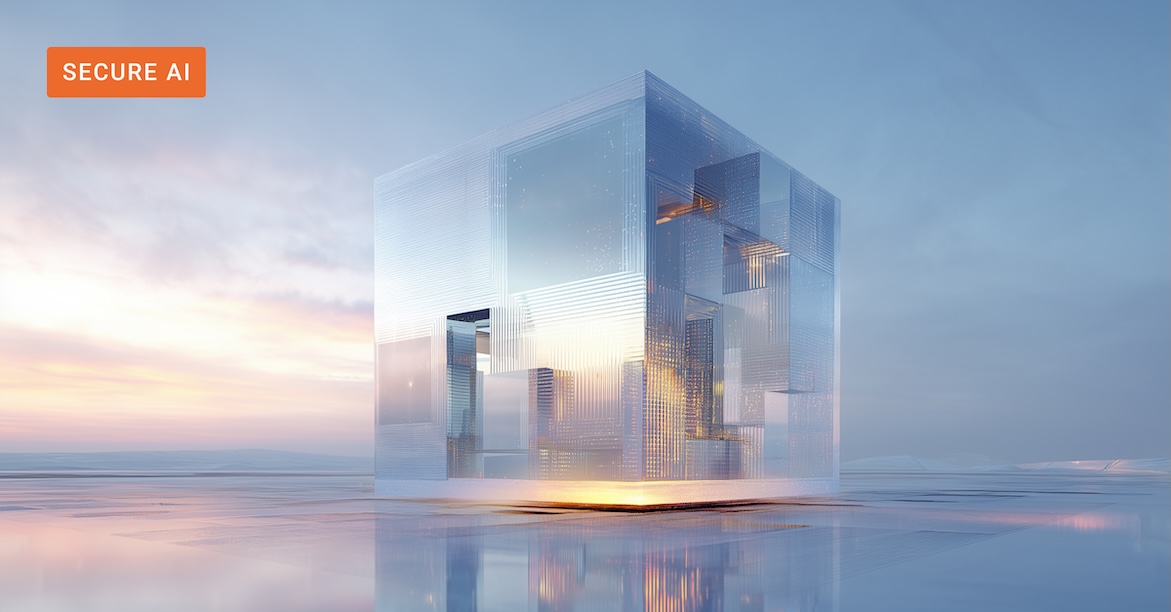Consider the collective wisdom within your organization – decades’ worth of operational insights, customer feedback, strategic decisions, and undocumented processes held by your most experienced employees. Now, imagine volumes of that knowledge walking out the door as skilled workers retire.
This isn't a hypothetical; it’s a reality that organizations worldwide are already facing. This generational brain drain is creating vast knowledge gaps that hinder innovation, slow decision-making, and disrupt continuity.
Generative AI (GenAI) offers new possibilities for automation, insight generation, and revolutionizing customer interactions. Moreover, it can fill those knowledge gaps and drive intelligent action by powerfully blending its short-term memory with your organization’s long-term knowledge – if that knowledge is stored in a machine-readable format.
Context: Short-Term Memory for LLMs
When you interact with a GenAI model, like a chatbot or content generator, it relies on its context window as its primary form of memory. This is essentially a limited-capacity buffer in which the large language model (LLM) holds the immediate prompt you provide, previous exchanges in your conversation, and any data directly fed into that single interaction.
This short-term AI memory allows GenAI to maintain conversational flow and address the immediate query. It can seem incredibly intelligent within that narrow scope. However, its limitations are critical for enterprise leaders to grasp:
- Finite Capacity: The LLM context window has a hard limit. As conversations grow longer or the input data becomes too vast, the LLM starts to “forget” earlier details.
- Transient Nature: Once the conversation ends or a new session begins, that short-term AI context memory is wiped clean. The LLM has no persistent memory or recall of your specific business rules, internal policies, or past interactions beyond that single session.
- No Proprietary Knowledge: Public LLMs don’t know your company's unique product specifications, your retiring engineers’s deep knowledge, or the historical nuances of your client relationships.
For GenAI to be truly transformative in an enterprise context, it needs much more than the context provided by the ongoing conversation. It needs robust, enduring AI long-term memory of your organization's entire accumulated wisdom.
Why Long-Term Memory Matters for Enterprise AI
The challenge of retiring knowledgeable workers is more than just losing headcount; it's the invisible drain of institutional knowledge. Not just documented facts, but also:
- Nuances and Best Practices: "How we've always done it" or "why we made that specific decision three years ago."
- Problem-Solving Histories: The intricate steps taken to overcome past challenges, the failed attempts, and the lessons learned.
- Networked Expertise: Who knows what, and how different departments or individuals collaborate effectively.
- Tacit Knowledge: The unspoken rules, instincts, and insights gained through years of experience.
When this knowledge is lost, new employees face longer onboarding curves, recurring problems might be solved less efficiently, and the ability to make truly informed decisions based on a full historical contextual memory diminishes.
To mitigate this critical risk and accelerate your enterprise's learning curve, you need a mechanism to capture, structure, and make this long-term knowledge persistently accessible to your GenAI – using a taxonomy and ontology management system.
RAG and Knowledge Graphs: Powering Generative AI’s Long-Term Memory
Here's where the magic happens: Combining a sophisticated retrieval mechanism with a highly structured knowledge repository as GraphRAG provides GenAI with enduring long-term memory.
- Retrieval Augmented Generation: When a GenAI receives a query, retrieval augmented generation (RAG) doesn't just pass it directly to the LLM. Instead, it first retrieves relevant information from proprietary knowledge bases – your enterprise's long-term memory. This retrieved context is then injected into the LLM's short-term context window along with the original prompt, grounding the LLM’s response in factual, current, and proprietary information.
- Knowledge Graphs: While RAG is the retrieval mechanism, its effectiveness hinges on the quality and structure of the knowledge base it pulls from. This is where knowledge graphs become indispensable, structuring the long-term memory for your GenAI. Unlike unstructured data lakes or document repositories, knowledge graphs add value in enterprise settings in various ways:
- Structured Precision: Knowledge graphs leverage curated taxonomies to standardize the naming of entities and categories and ontologies to define relationships between entities and rules between those categories. Effective taxonomy management and ontology management is critical to translate human knowledge into a highly accurate, machine-readable format, improving the accuracy and completeness of the RAG platform's information retrieval process.
- Contextual Depth: Knowledge graphs don’t just capture facts, but also how they relate to each other. This allows GenAI to grasp nuanced connections and provide deeply contextual answers.
- Inference Capabilities: Knowledge graphs can infer new knowledge from existing relationships, expanding GenAI's understanding and enabling it to answer questions it wasn't explicitly trained on, enhancing its process awareness.
By digitizing the implicit and explicit knowledge of your retiring experts into a structured, accessible, and machine-readable format, knowledge graphs directly address the loss of institutional memory, transforming your enterprise GenAI platform into the enduring brain of your organization, available 24/7 – effective enterprise AI with long term memory.
Strategic Impact: The Power of a Comprehensive AI Memory
The ability to blend GenAI's short-term context with your enterprise's robust long-term knowledge unleashes powerful strategic advantages, especially as knowledge gaps widen:
- Strengthened Institutional Resilience and Continuity: Protect your most valuable intellectual capital against expert retirements. Your organization becomes less reliant on individual memory and more on your organization's collective brain, ensureking consistent operations and knowledge transfer across generations.
- Elevated Strategic Decision-Making: Empower your leaders with GenAI that can instantly query, analyze, and synthesize insights from your entire, deeply contextualized knowledge base. This makes decisions more data-driven and historically informed, reducing reliance on fragmented information.
- Accelerated Organizational Learning and Adaptation: Your GenAI, tapping into its long-term memory, can rapidly digest vast amounts of proprietary historical data, identify patterns, and surface insights that human teams would take months to uncover. This way, your business can learn faster from its own experiences and adapt rapidly to market changes.
- Enhanced Innovation and Discovery: When GenAI can tap into a rich, interconnected memory of your products, customers, and market dynamics, it can identify subtle correlations, emerging trends, and product or service combinations previously hidden within your data silos, turning internal knowledge into competitive advantage.
- Streamlined Onboarding and Workforce Empowerment: New hires can instantly access the collective wisdom, best practices, and historical context stored in your knowledge graph-powered GenAI, drastically reducing ramp-up times and accelerating their productivity. Seasoned employees are freed to focus on higher-value tasks rather than repetitive training.
Ultimately, organizations that proactively secure their long-term knowledge will define the next era of AI-driven excellence. Those that don't risk losing critical knowledge, leaving them to grapple with data siloes and lost expertise.
Empowering Your Enterprise with a Smarter, More Lasting Memory
For GenAI to move beyond impressive demos and PoCs to deliver true, reliable enterprise value, it needs to deeply understand not only the present state of the organization, but also its past. One way to do so is by strategically blending the immediate context of LLMs with the persistent, precise, and proprietary insights stored within knowledge graphs using RAG-driven generative AI.
This blend is a critical step in safeguarding your institutional knowledge against an era of significant workforce transitions, ensuring your organization can not only maintain continuity but also truly thrive through accelerated learning, innovation, and vastly improved decision-making.
Ready to ensure your GenAI delivers deterministic accuracy and unlocks true enterprise value?
To understand how to bridge the accuracy gap and build trustworthy context-aware AI that will revolutionize your operations, download our essential guide: Closing the Accuracy Gap in Generative AI.







